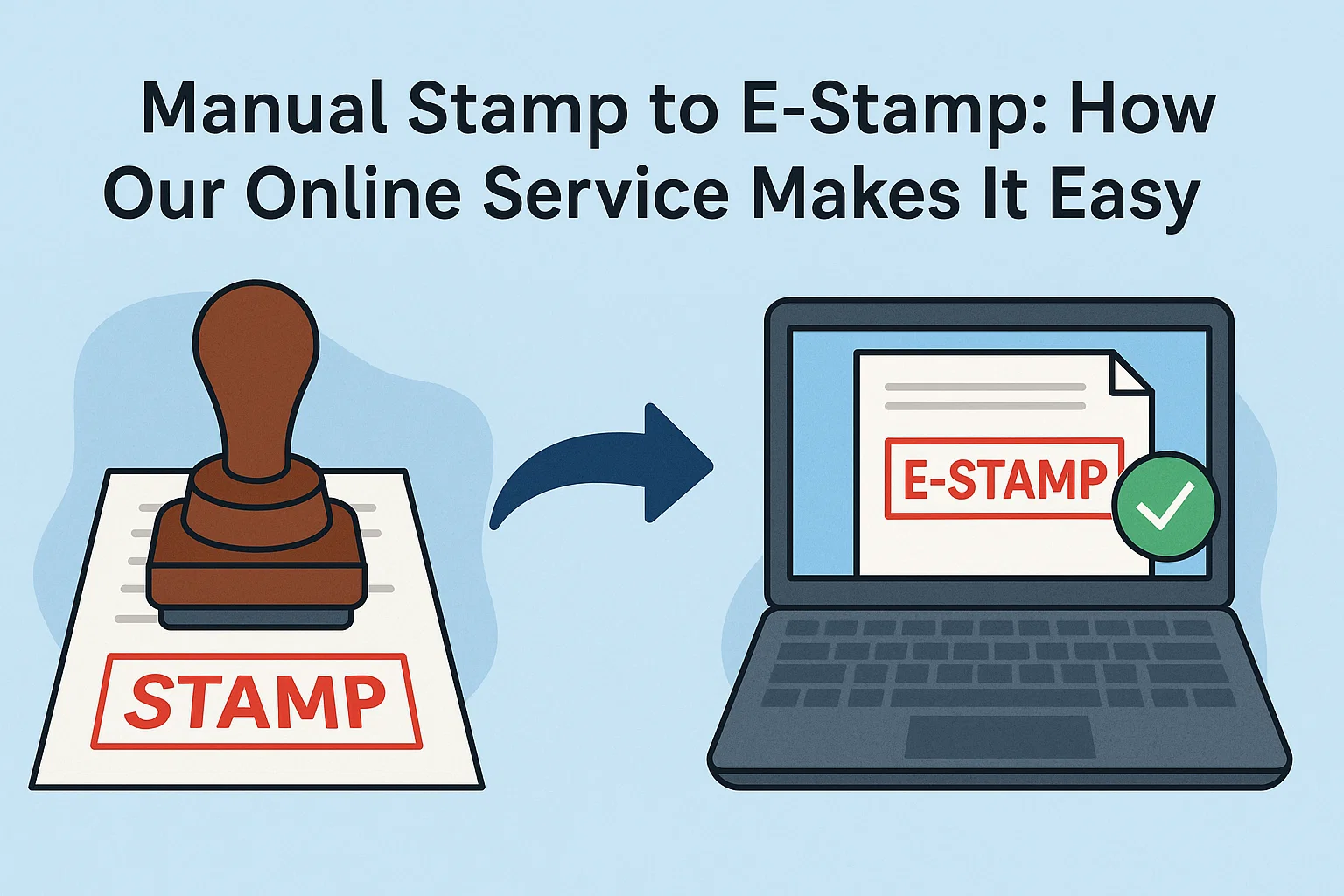E-Stamp Paper Online - Fast & Legal Process | LegalParihar
Stamp papers are essential for legal documents such as rent agreements, property sales, and affidavits. Traditionally, acquiring these required visiting licensed vendors or government offices. With the advancement of digital governance, e-stamping has emerged as a faster, more secure alternative.

In India, stamp papers are pivotal in the legal framework of the country. They are essential in validating a document from a simple rental agreement to a complex property transaction. One is required to buy physical stamp papers from licensed vendors which is how the country has operated for decades.
With the advancement of technology, the old system of manual stamping is being replaced with ‘E-stamping.’ E-stamping is the electronic payment of stamp duty where the process is made a lot simpler. If you or your organization needs to connect with legal paperwork, this new development is both useful and helpful.
Part 1: Problems Associated With Manual Stamping
🧱 What is Manual Stamping?
It is the act of purchasing a legally printed or government-authorized stamp paper, that uses manual labor to write or print agreements and is used as proof of duty paid. This system uses outdated practices by functioning legally.
🕰️ Operational Challenges
- Queues: Stands waiting and needing to be physically present.
- Vendor Visits: Is another delay as a result of human requires being physically present.
- Third-Party Dependency: A lot of people tend to use agents or middlemen. This adds both cost and risk.
- Authenticity Challenges: Verifying whether a stamp paper is genuine poses challenges.
- Storage and Longevity Issues: Documents deteriorate over time, and paper-based documents are particularly susceptible to theft, water damage, and loss.
⚖️ Legal but Outdated
Physical stamp papers are still legally enforceable documents. The legal profession, alongside many state governments, acknowledges that dealing with physical processes in a rubbilous world is highly counterproductive. The answer? A national modernisation drive.
Part 2: What is E-Stamping?
💡 A Digital Alternative
To electronically pay the stamp duty, e-stamping is used. Users receive a digitally signed certificate in lieu of a printed paper, which can be verified online and is equally legally binding.
The system is legally compliant and accessible, being powered by SHCIL (Stock Holding Corporation of India Limited) and other e-governance platforms at the state level.
🔐 Secure and Verified
E-stamps are issued with a unique identification number (UIN), along with time-stamped and proxy-locked signatures. This enhances not only document authenticity, but makes fraudulent activities drastically easier.
The usual procedure consists of the following steps:
- Choosing the document type or agreement
- Keying in the party details alongside the stamp duty fee
- Making the payment online
- Downloading a digital certificate instantly
In most cases, the turnaround time is less than five minutes.
Advantages of E-Stamping
- E-Stamp Generation Acceleration: There is no need to physically be at an office due to most e-stamps being generated a few minutes after payment is made.
- Perpetual Accessibility: Ability to access documents 24/7 in supported states is advantageous for urgent documentation.
- Environmental Friendliness: No printing, no paper, and better storage all equate to being more environmentally friendly.
- Verification Simplicity: E-stamps can easily be verified by any relevant authority using the UIN.
- Less Dependency: Third-party logistics and agents are no longer required.
- Legal Protection: Integrated with revenue departments of respective states and protected by the Information Technology Act.
Typical E-Stamping Scenarios
- Rental or Lease Agreements
- Property Transfer or Sale Deeds
- Financial and Loan documents
- Business Contracts and Partnership Deeds
- Affidavits and Legal Declarations
In summary, where a document has legal implications, such as those which attract stamp duties, e-stamping can securely be applied.
Availability by State
Currently, e-stamping is operational in a number of states in India, but this number continues to rise. These states include:
- Madhya Pradesh
- Maharashtra
- Karnataka
- Tamil Nadu
- Gujarat
- Rajasthan
- West Bengal
- Telangana
- Uttar Pradesh
Stamping manually does still exist simultaneously in some of these places. Everyone refers to the digital model, its gaining momentum as the standard.
Conclusion
The transition towards e-stamping in India is not merely about digital adaptation. It signifies a fundamental upgrade in the systems used to record and authenticate legal transactions. The practical benefits e-stamping provides, from reduced waiting times to enhanced transparency and lesser risks, will be an advantage for both individuals and businesses.
If you are still using manual stamp papers, it is advisable to upgrade your methods. With increasing state coverage, e-stamping supported by legislation is not solely the future, but the present.